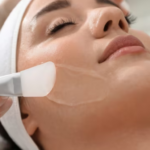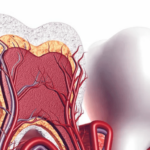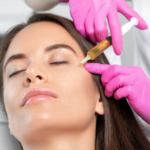Bone regeneration is a fascinating field of study that holds great potential in the realm of aesthetic medicine. With advancements in science and technology, it is now possible to restore and rejuvenate bone structures, enhancing facial aesthetics and improving overall facial harmony. This article will delve into the science behind bone regeneration in aesthetic medicine, exploring the techniques, materials, and considerations involved in this innovative approach.
Understanding Bone Regeneration:
Bone regeneration is a natural process that occurs in the body to repair and restore damaged or lost bone tissue. It involves a complex series of cellular and molecular events that culminate in the formation of new bone. In aesthetic medicine, bone regeneration techniques are employed to address facial bone deficiencies, reshape contours, and create a more youthful appearance.
The Role of Stem Cells:
Stem cells play a pivotal role in bone regeneration. These unique cells have the remarkable ability to differentiate into various cell types, including osteoblasts, which are responsible for bone formation. Stem cells can be sourced from different locations, such as adipose tissue, bone marrow, or dental pulp. These cells are then isolated, processed, and applied to the treatment site to stimulate bone regeneration.
Growth Factors and Bone Regeneration:
Growth factors are natural substances that regulate cell growth, division, and differentiation. In the context of bone regeneration, specific growth factors have been identified to have a profound effect on bone healing and regeneration. These growth factors can be extracted from the patient’s blood or produced synthetically. They are then applied to the treatment area, promoting bone cell proliferation, angiogenesis (formation of new blood vessels), and the recruitment of stem cells.
Bone Loss and Facial Aging:
Bone loss in the face occurs due to various factors, including natural aging processes, hormonal changes, genetics, and lifestyle choices. The decrease in bone density can result in facial asymmetry, hollowed cheeks, a receding chin, and a sunken appearance. These changes contribute to an aged and tired look. By addressing bone loss, aesthetic practitioners can effectively reverse these signs of aging and restore a more youthful appearance.
Bone Regeneration Techniques:
Several techniques are employed in aesthetic medicine to promote bone regeneration and enhance facial aesthetics. One commonly used approach is bone grafting, where bone or bone-like materials are transplanted to the targeted areas to stimulate new bone growth. Autografts, allografts, xenografts, and synthetic bone graft materials may be utilized depending on the patient’s needs and preferences.
Bone Remodelling and Stimulating Factors:
Bone regeneration in aesthetic medicine relies on the body’s natural ability to remodel and regenerate bone tissue. Various factors influence this process, including mechanical stress, nutritional factors, and hormonal influences. Treatments such as hormone replacement therapy, nutritional supplementation, and specific exercises may be recommended to optimize bone regeneration and support facial rejuvenation.
Advanced Technologies in Bone Regeneration:
Advancements in technology have greatly enhanced the efficacy of bone regeneration in aesthetic medicine. One notable innovation is the use of platelet-rich plasma (PRP) and growth factors. PRP is derived from the patient’s own blood and contains a concentrated amount of growth factors that stimulate tissue healing and regeneration. When applied to the targeted areas, PRP accelerates bone formation, leading to improved aesthetic outcomes.
Combining Bone Regeneration with Soft Tissue Treatments:
To achieve comprehensive facial rejuvenation, bone regeneration techniques are often combined with other soft tissue treatments. Dermal fillers, for instance, can be strategically injected to restore volume and further enhance facial contours. By addressing both bone loss and volume depletion, practitioners can achieve harmonious and natural-looking results.
Summary:
Bone regeneration in aesthetic medicine opens up new possibilities for facial rejuvenation and enhancement. Through the utilization of stem cells, growth factors, bone grafting techniques, and advanced technologies, it is now possible to restore facial bone structures and achieve natural-looking results. By addressing bone loss and restoring bone volume, practitioners at aesthetic clinics like Dentaverse can achieve remarkable results in facial harmony and rejuvenation.
Bone regeneration techniques have revolutionized the field of aesthetic medicine at clinics like Dentaverse, providing transformative solutions for facial rejuvenation and enhancing overall facial aesthetics. Through a comprehensive and personalized approach, these techniques, along with the integration of advanced technologies, offer individuals the opportunity to achieve their desired aesthetic goals and embrace their natural beauty with confidence.




